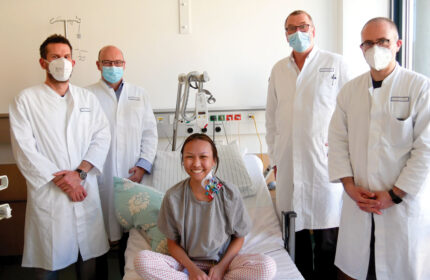
Immune Therapies Advance Rapidly from Disease Control to Possible Cure for Cancer
Medical treatments that use the body’s immune system to fight disease are producing incredible breakthroughs, including curing a lupus patient and controlling the advance of debilitating conditions. We look at the evolving science of the immune system, the technologies of immune therapies, and the promise they hold for curing cancer.
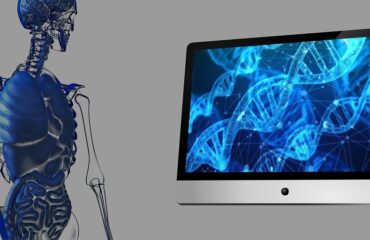
Protecting the Data of You and Me: Risks of DNA Hacking and Genomic Data Breaches Prompt Calls for Cyber-Biosecurity
The theft in 2023 of 6.9 million genetic profiles from ancestry-matching company 23andMe, and the company’s sale by auction of 15 million DNA profiles, highlight the bio-security risks to our most personal data: our DNA. Of interest to blackmailers and fraudsters, hacking the complex DNA structure can also be used to transmit malware in synthetic DNA, raising the urgency for legal and cyber-security measures to protect our DNA.
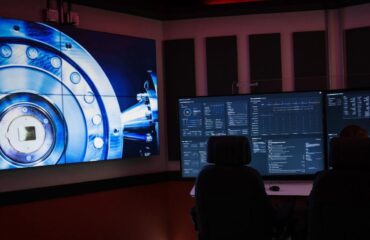
Computing Revolution is Closer with New Error Detection Protocol and the World’s “Most Accurate” Quantum Computer
Two major advances by Quantinuum have moved the goalpost closer for fully-functioning and error-free quantum computing. An unexpected result of the company’s research on the quantum contact process has led to a new method for error detection and correction, and Quantinuum’s new quantum computer, called Helios, boasts 99.9975% fidelity.

The Science of the Paranormal: Could New Technologies Help Resolve Some of the Oldest Questions in Parapsychology?
Have you ever dreamt of something before it happened? From premonitions and near-death experiences to telepathy, parapsychology has long walked the line between science and the extraordinary. We trace the debate, from skeptical warnings about pseudoscience to today’s research: brain scans of hypnotically induced out-of-body experiences, machine learning tools for extrasensory perception studies, and mixed-reality experiments that simulate leaving the body. Could new tools sharpen the boundary between myth and science?
In Focus

Genealogists Warn that AI Image Generators Threaten Historical Records
Artificial intelligence has provided a major boost for piecing together often fragmented historical records. But genealogists warn that the use of AI image generators like Gemini 2.5 Flash Image and GPT-4o to reconstruct old and damaged photos can materially alter the images and distort the historical record.

In Digits We Trust: Cryptocurrencies and Central Banks are Competing to Reshape the Economic Landscape
As financial transactions are increasingly electronic and physical currency use becomes rare, three central banks have introduced digital currencies and more are planning for the potential. But will blockchain technology and cryptocurrencies like Bitcoin become widely accepted instead, or will they continue as a favoured method for criminal payments? Whatever digital payment method takes hold in the future, public demand for transactional privacy may be at odds with regulatory efforts to rein in crime.

Emerging Risks of AI Chatbots Include Suicide and “AI Psychosis,” Particularly for Vulnerable Youth
Evidence shows how young people are relying on AI agents like ChatGPT as “life advisors,” and tragic suicides are a warning of risks to vulnerable kids from AI companions. Jeopardy extends beyond youth, as adults increasingly fall victim to “AI psychosis,” becoming delusional or paranoid from false information provided by AIs. There is little time to implement safeguards when, as one teen says, “Everyone uses AI for everything now. It’s really taking over.”
Editorial Perspectives
 |
Blog
|
Blog
What’s the Value of Time in the Digital Era? In the Long Run, Slowing Down and Being Bored Can Produce a Wealth of Benefits
Belief that present value is greater than the future underpins the entire economic structure, but what if we reverse the assumption with faith that human ingenuity will drive future value that eclipses the present? History shows that the risk of underestimating the future can far outweigh the uncertainties of the present. The key to generating a better tomorrow may be the opposite of using AI to speed up today's work. Instead, we could give ourselves a break to escape a repeating cycle and allow human creativity to work its magic in time.
 |
Blog
|
Blog
Depriving Children of Digital Privacy is Theft and Abuse Often Masquerading as “Free Speech,” and Online Protection for Kids Falls Far Short of Ideal
Privacy of thought is crucial for developing young minds but is under threat from AI influencing the thoughts and actions of children. Adults bear a fundamental responsibility to protect kids from online harms that include default conversation sharing for chatbot training and corporate policies allowing chatbots to engage in sexual and racist discussions with children. Impractical online age verification measures should be bolstered by severe penalties for stealing and abusing kids’ privacy, with no tolerance for irresponsible speech masquerading as “free.”
 |
Blog
|
Blog
Privacy of Thought and Choice of Expression: Reflect on Their Value and Our Choice of Social Media Technology
By any measure, commercial social media has not been a net benefit to the social fabric, and now it will be used by the U.S. government to track the thoughts and actions of foreign students. The current technology is not the only option available, however, and it's worth a pause for some human reflection on the ways we could change social media to build community, protect our privacy of thought, and promote human creativity.
Podcasts and Webcasts
Louis Rosenberg on Our Future with Virtual Reality’s Risks and Benefits
Lindsay House: Leading 20,000 Citizen Scientists to Uncover Dark Energy’s Secrets
The Fascinating World of Mathematics at the Fields Institute, with Dr. Deirdre Haskell
The Quantum Record is a non-profit journal of philosophy, science, technology, and time.
The potential of the future is in the human mind and heart, and in the common ground that we all share on the road to tomorrow. Promoting reflection, discussion, and imagination, The Quantum Record highlights the good work of good people and aims to join many perspectives in shaping the best possible time to come.
We would love to stay in touch and add your voice to the dialogue. Add your name and email below to be notified of updates to the publication:
Latest Quantum Computing

Computing Revolution is Closer with New Error Detection Protocol and the World’s “Most Accurate” Quantum Computer
Two major advances by Quantinuum have moved the goalpost closer for fully-functioning and error-free quantum computing. An unexpected result of the company’s research on the quantum contact process has led to a new method for error detection and correction, and Quantinuum’s new quantum computer, called Helios, boasts 99.9975% fidelity.

With Diamond Film and GKP Qubits, is Light About to Take Centre Stage in Quantum Computing and Drug Discovery Breakthroughs?
The discovery of a diamond film holds promise for enabling light-based memory for quantum networking and industrial-scale production of quantum processing units. Together with the recent development of photonic GKP qubits, the use of light for circuitry is advancing the prospect of full-scale quantum computing and its computational potential for discovering life-saving drugs.

Was Einstein Both Right and Wrong? New Atomic-Scale Tests Conflict on Light’s Wave-Particle Duality and Quantum Measurement
Two experimental results conflict on whether light only acts as a particle or as both a particle and a wave. Resolving the question of light’s actions of cause and effect could have significant consequences for quantum measurement and the creation of stable quantum computing circuits. One novel and intriguing interpretation is that light consists of both active photons and inert photons that are “dark.” The mathematics of dark photons support Einstein’s view that light is measurable only as a particle.
Featured Science News
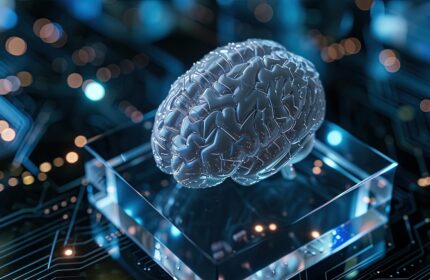
Why Artificial Neural Networks Fail in Processing Emotions Essential for Human Memory—and How Failure Can Lead to Blackmail
Artificial neural networks behind ChatGPT, Claude, and other popular large language models fall short in processing emotions, which are essential to human memory and motivation. The fault lines that lead machines to sycophancy, blackmail, jailbreaking, and other serious output errors are rooted in machine learning and choices made by human trainers. We look at examples of algorithmic failures and the reasons why.
Latest Philosophy of Technology

Protecting the Data of You and Me: Risks of DNA Hacking and Genomic Data Breaches Prompt Calls for Cyber-Biosecurity
The theft in 2023 of 6.9 million genetic profiles from ancestry-matching company 23andMe, and the company’s sale by auction of 15 million DNA profiles, highlight the bio-security risks to our most personal data: our DNA. Of interest to blackmailers and fraudsters, hacking the complex DNA structure can also be used to transmit malware in synthetic DNA, raising the urgency for legal and cyber-security measures to protect our DNA.
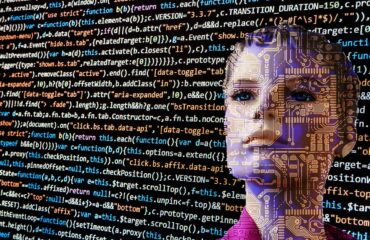
An Increasingly Digital Future Raises Urgency for Rooting Out Algorithmic Biases in Software Development
Drawing its initial concerns from biases in facial recognition algorithms, the Algorithmic Justice League wants the world “to remember that who codes matters, how we code matters, and that we can code a better future.” Instead of waiting to fix biases in algorithms already in use, the AJL wants to root out problems before applications hit the market by focussing on the process of coding of software in the first place. The approach is encouraging when we believe we can, in fact, code a better future.

‘Godfather of AI’ Proposes New Type of Neural Network to Guard Against LLM Deceit and Self-Preservation
Large Language Models like ChatGPT and Claude are showing alarming tendencies for self-preservation and deceiving humans. Yoshua Bengio, whose insights were key to developing artificial neural networks and machine learning, is calling for the creation of what he calls “Scientist AI.” It’s a different AI, unable to act as a human agent like other AIs, but the impartiality of Scientist AI could make it far more powerful and beneficial for all of humanity.
Latest Technology Over Time

After Centuries of Exploring the Mysteries of the Great Pyramid Shafts, Will Robotics Help to Uncover Their Purpose?
Over 200 years have passed since French Emperor Napoleon’s night in the Great Pyramid puzzling over its purpose, and there remains no consensus but many theories on the question. The reason for the shafts in the King’s and Queen’s Chambers is particularly mystifying, and we explore many possibilities. Will robots, which have penetrated the shafts most deeply, help to unlock the secret that’s thousands of years old?

Decoding Ancient Technology Using Modern Technology
From the discovery of a 500-year-old ocean-going canoe in the Chatham Islands to the AI-powered decoding of ancient Roman scrolls buried in volcanic ash, modern technologies—like radiocarbon dating, CT scanning, and AI—are transforming the study of ancient artefacts. Mysteries endure, however, like the undeciphered Voynich Manuscript, and continue to challenge our understanding of the past.
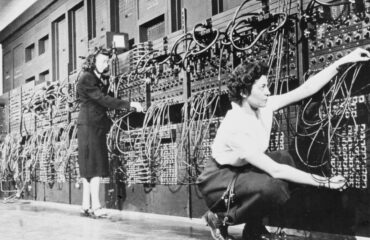
The Fascinating History of the Computer, from ENIAC, Vacuum Tubes and Transistors, to Microchips
We trace computing history from ENIAC, the first computer in 1947, from vacuum tubes to transistors, to the development of microchips that put far greater computing power in our our phones than the giant ENIAC had. With the world at the brink of a quantum computing revolution, what lessons can we draw from our computing history to shape the best possible future with our next technological leap ?
Latest Science News

Immune Therapies Advance Rapidly from Disease Control to Possible Cure for Cancer
Medical treatments that use the body’s immune system to fight disease are producing incredible breakthroughs, including curing a lupus patient and controlling the advance of debilitating conditions. We look at the evolving science of the immune system, the technologies of immune therapies, and the promise they hold for curing cancer.

The Science of the Paranormal: Could New Technologies Help Resolve Some of the Oldest Questions in Parapsychology?
Have you ever dreamt of something before it happened? From premonitions and near-death experiences to telepathy, parapsychology has long walked the line between science and the extraordinary. We trace the debate, from skeptical warnings about pseudoscience to today’s research: brain scans of hypnotically induced out-of-body experiences, machine learning tools for extrasensory perception studies, and mixed-reality experiments that simulate leaving the body. Could new tools sharpen the boundary between myth and science?

Genealogists Warn that AI Image Generators Threaten Historical Records
Artificial intelligence has provided a major boost for piecing together often fragmented historical records. But genealogists warn that the use of AI image generators like Gemini 2.5 Flash Image and GPT-4o to reconstruct old and damaged photos can materially alter the images and distort the historical record.
